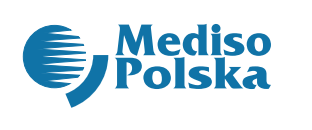Scientific programme:
9:30 – 10:00 Registration
10:00 – Conference opening – introduction from conference organisers
10:05 – Welcome word from the Vice-Rector of the Medical University of Gdańsk, Prof. Michał Hoffmann
10:10 – Nuclear medicine – the essence of molecular imaging, a short historical perspective – dr med. Jacek Teodorczyk, MUG
10:30 – Precision Imaging in Nuclear Medicine: A Translational Journey – prof. Takahiro Higuchi
11:00 – From lab to clinic: investigating antibodies and affibody molecules for improved cancer diagnosis and treatment – prof. Gabriela Kramer-Marek
11:30 – nanoScan Family: Preclinical Product Portfolio at Mediso – Magdalena Białek-Pietras, PhD, Mediso Polska, sponsored lecture
11:45 Coffee break
Chair: dr hab. Aleksandra Rutkowska
12:15 – Animal models of neurodegenerative diseases – a role of nuclear imaging in in vivo detection of disease biomarkers – prof. Grzegorz Węgrzyn
12:45 – Neurodegenerative diseases in humans – why molecular imaging is gaining importance? dr med. Bogna Brockhuis (recorded lecture), MUG
13:00 – Perspectives on preclinical molecular imaging research at the Radiopharmacy Centre, Medical University of Bialystok – Msc. Izabela Suwda-Kalita
13:15 Lunch break
Chair: dr Martyna Karlewska
14:10 – PSMA theranostics – the newest achievements – dr hab. Wojciech Cytawa, MUG
14:40 – Alpha, Beta or both – Perspectives in Radionuclide Treatment – prof. Ralph A. Bundschuh
15:10 – How FDG PET revolutionized management of lymphoma patients? dr med. Grzegorz Romanowicz, MUG
15:30 – CXCR4-directed imaging and therapy in Nuclear Medicine – prof. Constantin Lapa
16:05 Tea break
Chair: dr hab. Wojciech Cytawa
16:45 – FDG PET in the management of oligometastatic lung cancer – dr Artur Bandura, MUG
17:00 – Can radiomic features of FDG PET images predict PD-L1 expression and guide immunotherapy? – dr med. Bartłomiej Tomasik, MUG
17:15 – Boron Neutron Capture Therapy (BNCT) – a different aspect of nuclear medicine – Msc Eng. Edyta Michaś-Majewska, Technical University of Gdańsk
17:30 – Through the PET Lens: Weighing the Power of ¹⁸F-FDG-PET/CT in Tracking Immune Therapy Side Effects – Lin Akily, Student from Scientific Circle, Department of Nuclear Medicine, MUG
17:40 – Conference closing.
Profile of lecturers:
Prof. Takahiro Higuchi is a physician-scientist currently serving as Professor of Preclinical Imaging and Development at the Department of Nuclear Medicine, University Hospital Würzburg, Germany, and holds an academic affiliation with Okayama University, Japan. His research focuses on the development and clinical translation of PET radiotracers targeting key biomarkers such as the norepinephrine transporter (NET), angiotensin II receptors, and chemokine receptors. He actively engages in international collaborations dedicated to translational molecular imaging. His work aims to bridge preclinical innovation with clinical application, advancing precision diagnostics and personalized therapy in nuclear medicine.
His lecture will highlight recent advances in the development of targeted radiotracers for molecular imaging, with a focus on translational strategies that bridge preclinical innovation and clinical practice. Particular emphasis will be placed on next-generation PET tracers targeting norepinephrine transporter as cardiovascular and oncological biomarkers that enhance diagnostic precision and therapeutic decision-making.
Prof. Gabriela Kramer-Marek has been from 2013 the Head of (PI) Preclinical Molecular Imaging, Division of Radiotherapy and Imaging, Division of Cancer Theraputics, The Institute of Cancer Research, Sutton, UK. Also, from 2021 she has been the Head of (PI) Radiopharmacy and Preclinical Imaging Division, Maria Sklodowska-Curie Memorial Cancer Centre and Institute of Oncology, Gliwice, Poland. She will share her extensive experience in preclinical molecular imaging of various biotargets located on tumors, especially breast cancer and glioblastoma multiforme, in small animals, with the use of radiolabeled antibodies and affibodies.
Prof. Grzegorz Węgrzyn since 1996 has been the head of Department of Molecular Biology at the University of Gdańsk, Poland. In his laboratory, several projects are conducted, which are focused mainly on regulation of gene expression and DNA replication, role of oxidative stress in bacterial virulence, and mechanisms and new treatment methods of human genetic diseases.
His lecture will focus on neurodegenerative diseases, which are especially difficult to treat, as (i) most of them are caused by genetic defects, (ii) brain is perhaps the most complicated organ in humans/mammals, and (iii) brain is especially hard to reach by different drugs. In this light, effective monitoring of effects of any tested drugs requires sophisticated tools for reliable assessment of the results of therapies. Nuclear imaging under in vivo conditions provides a possibility to investigate changes in brains of animal models of neurodegenerative diseases, facilitating development of novel therapeutic approaches.
Prof. Constantin Lapa is a Chair of the Department of Nuclear Medicine, University of Augsburg, Germany. Prof. Lapa’s expertise focuses on targeted radiopharmaceuticals in molecular theranostics of various malignancies, including hematological ones. His lecture will concern the novel radioligands enabling noninvasive molecular imaging of C-X-C motif chemokine receptor 4 (CXCR4). CXCR4 is a commonly expressed surface receptor on immune cells and overexpression has been described for most hematologic and for several solid neoplasms. High CXCR4 expression has been reported for aldosterone-producing cells in aldosterone-producing adenoma.
Prof. Ralph A. Bundschuh is head of the Department of Nuclear Medicine at the University Hospital Carl Gustav Carus at the Technical University Dresden. Prof. Bundschuh studied physics at the Technical University of Munich and medicine at the Ludwig Maximilian University, where he also received his doctorate in both disciplines. His main research focus is on nuclear oncology, especially theranostics, as well as translation of novel tracers including application of new isotops as Lead-212 or Copper-67 in this context. The projects he is currently engaged in include preclinical work, with a special focus on spheroid models and clinical applications. He will speak about different tumor molecular biotargets: PSMA, SSTR, FAP, and others.
Partnerzy:

